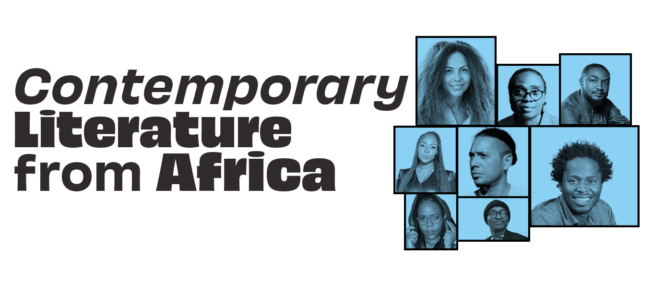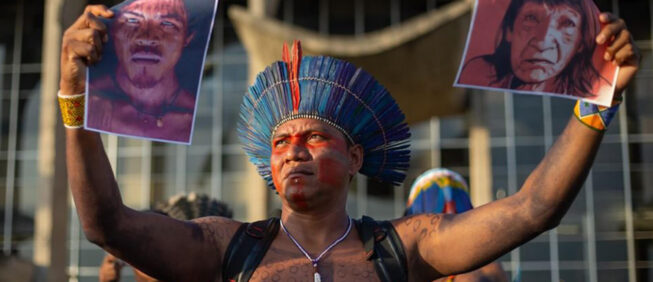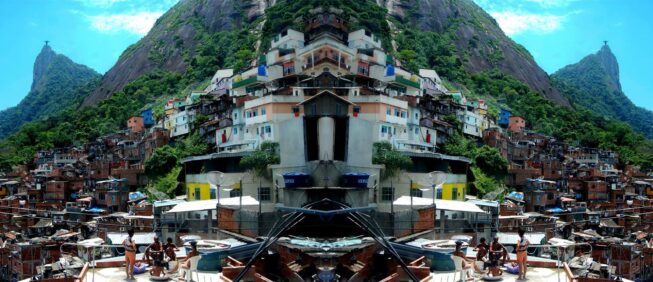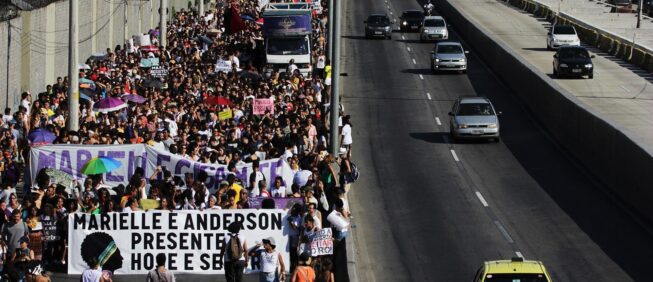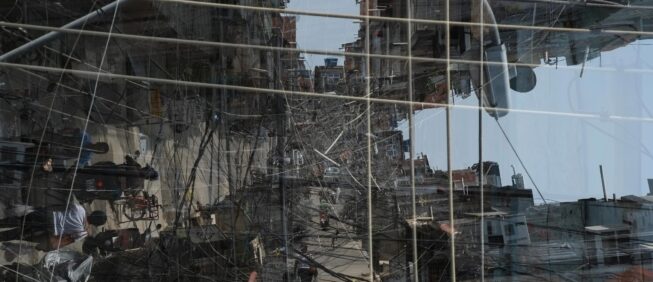"Haitian migration — Brazil's opportunity to foster its solidarity with the world"
Interview with professor and lawyer Paulo Abrão, National Secretary of Justice from 2011 to 2014
by Daniel Martins and Felipe Moulin
September, 2023
translated by Christine Eida
Was Haitian immigration in Brazil a chance to update our migration and refugee policy and governance?
Paulo Abrão: Haitian migration represented a paradigmatic turning point within the Brazilian State on the topic of migration. We have come from a lengthy period of the Foreigners’ Statute, created and prepared during the military dictatorship, totally impregnated by a doctrine of national security, of "foreigners as enemies" and the elements of security as values which are higher than the principles of human rights. It is a very convenient form of logic for the Brazilian State, which adopted the discourse of a diversified, non-discriminatory country, whose historic construction had taken place due to welcoming different people and, therefore, Brazilians were the result of this fusion.
Thus, having “sufficient” legislation, with specific measures by the Brazilian State, in terms of its receptiveness to migrant population groups was a full demonstration that our society was mixed, and not xenophobic. It was a very well-considered ideological discourse. But, in practice, from the point of view of human rights, we experienced abusive situations of permanent discrimination, no local integration systems, the absence of humanitarian visas, and absence of a national migration policy, which gave rise to a social dynamic of a differentiation between “first and second-class migrants”, between the desirable and non-desirable migrant.
We experienced abusive situations of permanent discrimination, no local integration systems, the absence of humanitarian visas, and absence of a national migration policy, which gave rise to a social dynamic of a differentiation between “first and second-class migrants”, between the desirable and non-desirable migrant
I was asked to take on the National Secretariat of Justice in 2011, and one of the areas under my supervision was the Migration Department. A demand had already accumulated for us to reform the Foreigners’ Statute legislation, since it was legislation that produced a number of obstacles to regularizing foreigners in Brazil. In addition, it was a timid policy, when considering the contribution that Brazil could make to the world.
While central countries and some European capital cities had 20% of their populations made up of foreigners, Brazil had less than 1%. This challenged the discourse that we were a country open to migration. In practice, this flow was obstructed by legal obstacles. So, there was the intention of bringing a human rights focus to Brazilian migration policy, seeking a more relevant Brazil, considering the major global migratory crises, being more sympathetic and coherent, and in line with our official discourse on foreign policy.
During the same period, we were facing a flow of Haitian migration in the north of Brazil, as a result of the 2010 earthquake and the violent situation in Haiti. There was a specific responsibility for Brazil, having coordinated MINUSTAH [United Nations Stabilization Mission in Haiti, 2004 – 2017] for several years. In fact, without having solved the problem, and having left a trail of human rights violations. There are many stories of soldier’s unacknowledged children, none of them acknowledged, and the episode of the Brazilian Armed Forces massacre in Cite Soleil, without any individual accountability being achieved. In this Haitian immigration we saw an opportunity to update and open up the debate on migrants’ human rights.
Was it an unprecedented migratory flow in Brazil?
It was an extraordinary migratory flow, unprecedented in our history for the reasons presented. Intra-regional migration in South America usually takes place between Spanish-speaking countries, or it is south-north migration. Brazil is not the natural destination for this flow. We have never encountered a migration which extrapolated the countries with which we have a land border, as in the case of the flow of Bolivians and Paraguayans. Principally, taking the high concentrated volume in a specific time period, such as the Haitian migration, which began in late 2010, but accelerated in 2011.
The last great migratory flow was last century, or the end of the previous one; so, that was a European, white migration. It could be said that the only national migration policy at this time was a migratory policy focused on whitening our people. The State decided that it needed to whiten the Brazilian population and, therefore, encouraged the arrival of Italians, Germans, Polish, and Spanish people, among others. They received land to establish themselves in the south and southeast.
I took on the National Secretariat of Justice in January 2011, and this Haitian migration had soared in late 2010, but still in quite reduced numbers. I remember that the migratory flow of Haitians started to be reported in the press in mid-December 2010. At that time, it was a little more than 1,ooo people who were entering Brazil, in Tabatinga in the Amazon. Suddenly an expressive black community started to emerge in Manaus, and this generated an “estrangement”, a social reaction. People wanted to know who they were, how they entered the country, and whether they were legal, or not. The Federal Police produced a warning, and the first institutional response was not to let them in, and to close Brazil’s border.
Suddenly an expressive black community started to emerge in Manaus, and this generated an “estrangement”, a social reaction. People wanted to know who they were, how they entered the country, and whether they were legal, or not. The Federal Police produced a warning, and the first institutional response was not to let them in, and to close Brazil’s border
They closed the Ponte da Integração [Integration Bridge], which connects Inãpari, in Peru, to the Brazilian town of Assis. This was the Brazilian State’s first institutional response. It produced a strong international backlash: where was that discourse of an open, humanitarian, sympathetic country?
That first flow was made up of highly qualified, professional Haitians who migrated due to a lack of opportunities in their country, which had been destroyed, and there was insufficient work and jobs, but they had money to pay for the journey and, more importantly, had access to information. The route left Haiti for the Dominican Republic and, from there, a flight to Quito, in Ecuador — the only Latin American country which, until then, did not require a visa from any country. They took a bus from Quito, to cross Peru or Bolivia, until they arrived in Brazil.
These first migrants had resources and money to bring suitcases, to sleep for two or three days in Quito, and arrive at the border with their belongings and their families. And, above all, they knew that, by law, by International Refugee Law, when a person arrives at the border of any country and requests asylum at migratory control, the country’s international obligation is to let them enter. The principle is: a priori, to protect. Then it evaluates if the request for asylum will be approved, or not. But the request is processed with the person within the country, on national territory.
In theory, the obligation of the Federal Police — who control the migratory post — when anyone requests asylum, is to let them enter, start the refugee protocol, and send it for the National Refugee Committee (CONARE) to decide on its merit. Therefore, the Federal Police faced a stalemate, since it had received the order to not let anyone enter, while knowing that, legally, when declaring their refugee status, the person had the right to enter.
Where was that discourse of an open, humanitarian, sympathetic country?
The first meeting on the topic at CONARE, which forms part of the (former) Foreigners’ Department, in the National Secretariat of Justice’s structure, was intriguing. CONARE is formed of a Federal Police representative; one from the Ministry of Justice; one from the Ministry of Foreign Affairs; one from the Ministry of Work; one from the Ministry of Health, and a representative from civil society, with a seat for a UNHCR [the United Nations High Commissioner for Refugees] observer. The board’s first response was limited and, we could say, shameful. The concern was purely bureaucratic, discussing whether the body had the conditions to process a high number of asylum requests. Thus, the meeting approved that the CONARE Executive Secretary moved to the border to, alongside the Federal Police, automatically refuse any requests for asylum. It was a rapid, unprecedented analysis, a purely bureaucratic approach.
A complete turnaround…
A totally unusual measure, which had never occurred previously, of a CONARE representative being based at the migratory post, to deny any requests, as they happened. I have never seen the state structure being as efficient and diligent. The concern was to protect the refugee system, not to protect people. Human life was not at the center of this procedure, the victim was not the center of attention. The concern was how to protect bureaucracy from a growing demand. But, social facts are always stronger than administration, stronger than the bureaucratic desire of the State, since this migratory flow was already organized, and only intensified.
The concern was how to protect bureaucracy from a growing demand. But, social facts are always stronger than administration, stronger than the bureaucratic desire of the State, since this migratory flow was already organized, and only intensified
With the Iñapari bridge closed, people started to enter at another point. It is a totally porous border in the Amazon, notoriously unable to control people. For those who initially found obstacles to entering at Inapari, they started to walk through the forest, to arrive in Cobija, in Bolivia, and entered through Epitaciolândia, in Acre.
See how a bureaucratic decision — concerned with protecting the institutionality of the State in its inability to fulfill its duties and obligations, set out in international conventions — impacts the risk to people’s lives, because this land route to Bolivia started to be the source of exploitation by smugglers, who offered to take them by other ways.
Therefore, a parallel, illegal market emerged, of high-level exploitation, money, and abuse.
Was there any clarity at this time about why Brazil was selected as the country of destination?
Brazil was selling itself to the world as a prosperous nation, with economic growth, a fall in unemployment, social programs for the poorest, and had high international visibility. President Lula gave great international visibility to the country. Brazil hosted the FIFA World Cup, the Olympics, and the Rio+20 Conference. Lula had ended his term of office with great popularity and a growing economy. He had also conducted an action of diplomatic policy, taking the Brazilian football team to play in Haiti. All of this produced a very strong social imaginary in Haiti.
"Brazil is a friendly nation helping us here in Haiti, so let's go to Brazil, which is going to welcome us." In the Haitian imaginary, Brazil was the land of prosperity, which would become the land of opportunity.
On becoming the chairman of CONARE, I identified that we were faced with other good opportunities. The first: establishing a migratory policy in which Brazil could be more sympathetic towards the world
Considering this scenario, on becoming the chairman of CONARE, I identified that we were faced with other good opportunities. The first: establishing a migratory policy in which Brazil could be more sympathetic towards the world. The second, of challenging the limits of the authoritarian legality of the Foreigners’ Statute, enacted during the military dictatorship, and constructing new legislation, which was more up to date and compatible with the country’s ambition of being a global player.
From that time, we sought to establish another logic, that we should allow everyone to enter, this was a humanitarian duty and this migration would be a positive factor for our economic growth cycle. It was a political decision of my secretariat at the Ministry of Justice. The flow of migrants was growing, and a coordinated, articulated, institutional response was required. We now had an average of 100 people passing through the border per day — practically 3,000 migrants per month.
A political decision in a bureaucratic structure, is it easily accepted?
It was extremely difficult and resulted in resentment in various other areas. There was institutional resistance from sectors of Itamaraty, the Federal Police, and also the Ministry of Work. For the Federal Police, this was a loophole for the entry of organized crime: "We do not know who these people are, and if they have a criminal record."
I think that one of the most awful things that I have heard in my life came from the highest authority at Itamaraty during these institutional dialogues, when they said: “Yes, Brazil is a sympathetic country, we are open to immigration, and we can even create an annual quota to accept 100,000 immigrants. But this is not the migration that we are interested in.” This shocked me at the time for overt racism in a meeting at the Chief of Staff Office.
The Ministry of Work also had to manage the discourse that opening up the entrance of foreigners would mean competition in the labor market for Brazilian workers. We should remember that important Brazilian trade unions participate in the National Council of Immigration.
The normative and institutional structure which existed was that of a controlled migratory policy, in which every labor visa request needs approval. There were no tools to regularize that type of demand, with a mass humanitarian focus
The normative and institutional structure which existed was that of a controlled migratory policy, in which every labor visa request needs approval. There were no tools to regularize that type of demand, with a mass humanitarian focus. And the country’s image was already starting to reap negative repercussions: "Brazil is detaining humanitarian migration at the border, of people who are fleeing natural disasters."
To a certain extent, bureaucracy was obstructed from creating solutions to solve the problems it had generated. The concern of many was that if we adopted a welcoming position (nothing more than fulfilling the country’s international obligations), this would encourage more people to come, and there would be a “migratory crisis.” A typical discourse of fear. I asked myself, “what migratory crisis? If Brazil does not have even 15%, or 10%, or 5%, or 1% of migrants”. A country of this continental size, which was growing economically.
The crisis was in holding them at the border, contrary to international law. It was in the lack of current legislation which envisioned a humanitarian visa, in the department of foreigners’ lack of structure, in the lack of public integration policies that could naturally insert them in the country’s productive chain, and provide comprehensive access to services, to pay taxes normally, and contribute with new knowledge and cultures that added value to the country.
So, even with CONARE saying that it was not asylum, people continued to arrive, requesting asylum, and entering through other loopholes at the border. We determined that the Federal Police should proceed with the delivery of a protocol with the request for asylum, and send it for CONARE’s decision. For me, the challenge was how we were going to regularize peoples’ permanence in the country, protect them, and make the most of this opportunity for the country. But if the request for asylum were denied, we would have to deport them. And they would end up entering in other ways, and being excluded and marginalized within the country, vulnerable to all of the illegal exploitation networks. Therefore, it was of public interest to regularize the migrants.
Was accepting a request for asylum an option?
Classically, there are two requirements for requesting asylum: a well-founded fear of political persecution, or a serious and generalized violation of human rights. And CONARE did not accept the justification of granting asylum on account of a generalized violation of human rights, because it understood that the reason for this migration was an environmental crisis, an environmental disaster, an earthquake; therefore, this was more of an economic migration. The Haitian migrants came to start a new life project.
We even started to open the debate on the possibility of inclusion as a climate refugee status for people who have to take refuge, and protect their lives due to environmental disasters, linking asylum and climate change. But this was not accepted either, the theory was too daring and cutting-edge at that time.
So, as I said previously, the former Foreigners’ Statute gave rise to the National Council of Immigration [CNIg], linked to the Ministry of Work. The logic of Brazilian migration was conditioned to labor migration, since this filtered those who had professional qualifications to be able to enter Brazil, and enabled the decision on the profile of a “desirable and undesirable migrant”. But there had been a CNIg resolution, an administrative loophole to resolve very specific situations in the past: an administrative resolution which declared that cases which were not covered by law could be approved.
We took this resolution (which must have been created at a specific time, to benefit someone), and applied it to the Haitians, arguing that: "This case is not covered: if it is not asylum, serious violations of human rights, well-founded fear of political persecution, work, a student visa, or diplomatic case, then it is a case which is not covered. If it is a case that is not covered, we are going to regularize this via a CNIg decision.”
We had to triangulate, the requests arrived at CONARE, within the Ministry of Justice, in the form of applications for asylum (which were not granted), so, we sent them to the CNIg, at the Ministry of Work, which met to decide on granting a residency visa, and returned it, for the Foreigners’ Department to regularize.
We set up an interministerial task force, and went on a mission for Acre to implement an immediate, collaborative social assistance action to regularize documents, a proper reception, and an organized migration, directed for local integration
Meanwhile, we set up an interministerial task force, and went on a mission for Acre to implement an immediate, collaborative social assistance action to regularize documents, a proper reception, and an organized migration, directed for local integration. At this time, migration in Tabatinga was very residual, the route was practically concentrated on Epitaciolândia, in Acre, with the border post located in Brazil.
Imagine Epitaciolândia, a small town in the north of the country, and there was a peak week, where there were more than 1,000 people. There was no structure in the town to host them. The Haitians camped in the squares, so we had to set up an emergency structure. I did not want a military structure, I did not want those military tents that resemble refugee war camps. I intentionally made the decision that I did not want the Armed Forces to be involved. Nor did I want the logic of militarization, since I was already dealing with the Federal Police, in a difficult discussion about security, because, to them "Brazil is going to host major events, and this may be the port of entry for terrorists."
So, we had organized civil society, and we contracted a local company, renovated a warehouse in the town, bought mattresses, set up enormous collective bathrooms and a collaborative kitchen. From that time, a person received a refugee protocol to await the residency visa procedure, and a list of names went to the CNIg, to approve their residency, and send the process back to the Ministry of Justice. Our proposal was to combine regularized entry with a work destination, in a location in which the migrant could be socially integrated, in a host network, with integration through a national job opportunity registry.
Our proposal was to combine regularized entry with a work destination, in a location in which the migrant could be socially integrated, in a host network, with integration through a national job opportunity registry
At that time, unemployment rates in the country had fallen to their lower numbers. It was not difficult to facilitate this since, in effect, we were experiencing an expansion in civil construction at the sites of major events. The migrants also went to work in the hotel sector in the south of the country, since the Brazilian labor market did not have professionals who spoke French, so this really benefited the tourist sector, and the hotel segment in particular.
These migration routes were widely communicated, so some of the Congolese and Senegalese migrants, who had previously tried to enter Brazil through Guarulhos airport, had been denied entry, and placed on a return flight, started to take another route on leaving Africa. They travelled up to Spain, caught a flight to Quito, and joined the Haitians entering Brazil. So, all of a sudden, some Congolese, Senegalese, and even Dominicans, started to arrive together. It was very residual, and nothing very expressive. So, what would we do with the migrants of other nationalities who arrived on the same route?
Our response was: everyone can enter. And, at the same time, we implemented a regional cooperation process with other transit countries, to coordinate these actions. We started to issue visas in Haiti, Ecuador, and Peru, to avoid them being subjected to the smugglers’ exploitation scams, and so that they entered by plane, directly into the major urban centers, and not necessarily in Acre. We started to establish referral centers in São Paulo, and other cities, to welcome the migrants, with support from Caritas, other social organizations, and local authorities.
Some of the Congolese and Senegalese, who were Muslim, started to be employed in halal slaughter houses which exported to Muslim countries. You can see how this migration, which could have been considered competition for the national workforce, in fact added value to the country, to increase exports. It helped Brazil to hold major events, working in civil construction, it helped Brazil to host this major flow of tourism, and helped an important sector in the Brazilian export of meat, it helped to diversify the cuisine, opening restaurants with international food, they went to work as teachers at language schools, diversified the arts, and this is just giving a few examples.
At that time, we also mobilized resources, forging agreements with the federative states, sending on money to these states to establish what we called Migrant Referral, Integration and Assistance Centers, or something like that. There they had a reception space, where they were directed to intensive Portuguese courses, and other professional courses with SESC and SENAI. Therefore, the migrants stayed in these reception centers with training courses, and an integration service, added to the National Employment System. Companies started to share their labor requirements, so we now registered these people, and referred them to the respective cities, with guaranteed jobs and income.
It was all a federal synergy, but not without its difficulties. Deep down, it was a comprehensive response model, which enabled more coherent immigration, despite the xenophobia
It was all a federal synergy, but not without its difficulties. Deep down, it was a comprehensive response model, which enabled more coherent immigration, despite the xenophobia. We faced a large amount of bureaucracy and conservatism, but this experience served to strengthen the debate on reform of the Foreigners’ Statute, and establish the bases to create a new Migration Law. We wanted to show how our law was restrictive and limited. It looked at migrants as a security issue and market reserve, and not with a human rights focus, since it created obstacles to other forms of migration, which were not economic. It was clear that we needed to create new types of visa, and these were the foundations for us to submit the new Migration Law, and bury more remnants from the dictatorship.
In order to achieve this, we established a working group of specialist legal experts, to prepare a proposal for a new law. They prepared a proposal which was submitted within the government, received adjustments from all areas, was sent to congress, and approved at a later date. A new law which, among other things, established a visa category which had not existed in Brazilian law: a humanitarian visa.
Haitian migration helped us to refine our migration legislation, which now favors various other groups of other nationalities, and swept away the authoritarian debris, left over from the dictatorship, which was the Foreigners’ Statute
Haitian migration helped us to refine our migration legislation, which now favors various other groups of other nationalities, and swept away the authoritarian debris, left over from the dictatorship, which was the Foreigners’ Statute.
Between 2011 and 2014, we regulated the entry of a little over 100,000 Haitian people into Brazil. Although the first Brazilian response had been not letting them enter, in practice, we showed that we could incorporate the Haitians, and this would not affect our economy, or the availability of work. Brazil had the conditions to do this. However, our migratory population rates hardly changed. And in violence statistics, the occurrence of criminal situations with the participation of Haitian migrants was inexistent.
Culminating all of this, we held the first national conference on migration and refugees (COMIGRAR) in 2014, so that, for the first time in history, the migrant community could take part in formulating public migratory policies, so that we had a national migration policy, heard by the migrants themselves.
The United Nations High Commissioner for Refugees, António Guterres, currently the UN Secretary-General, was also present. He gave a beautiful speech, saying that migrants had been invited to formulate public migration policy for the first time. However, holding this conference had not been easy because there had been resistance to officializing the conference, since some people did not want the result to automatically become a plan linked to public administration.
Is Brazilian legislation now appropriate and in line with the hosting potential the country has?
I believe that in relation to legislation, yes. Compared to other countries, it really is one of the most up-to-date legislations. But not migratory policy. We do not have a clear migratory policy compatible with our country’s potential. We want to be received and treated well abroad, so we need to do the same here - Brazil as a sympathetic migrant hosting country, in which we can establish reception targets, higher migratory process hosting targets. We have the conditions, and we can; we have this world obligation. The world is at boiling point, and people literally need stable places to live.
Since the dictatorship, Brazil has been a country of emigration. An upturn in these levels only occurred in 2012, during the Dilma government. For the first time, we had more immigrants than emigrants. With this history, we should be much more sensitive to what the need for people from other nations to come here means. I think it is still not sufficiently daring; for us to have a more inclusive, more open migratory policy, and that we could introduce more contributive standards, in terms of proportions of foreign migration in the country. This would do well in terms of cultivating values of diversity, tolerance, and multiculturalism in society. Brazil could be more proactive as a place of protection and solidarity for those who need it, and we have the conditions to do this.

Paulo Abrão | BRAZIL |
Professor, Doctor in Law, and executive-director of WBO (Washington Brazil Office). He was the executive-secretary of the OAS (Organization of American States) Inter-American Commission on Human Rights from 2016 to 2020; Director of the Mercosul Institute of Public Polices on Human Rights from 2015 to 2016, and National Secretary of Justice of Brazil from 2011 to 2014, when he chaired the National Council for Refugees.

